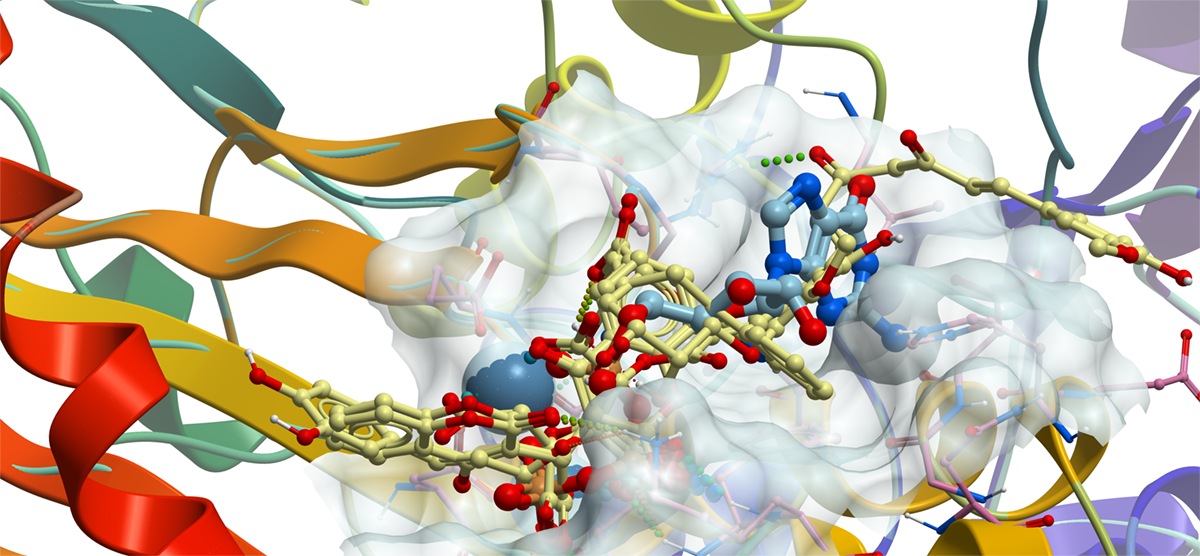Biofilms are communities of microorganisms that can colonize biotic and abiotic surfaces playing a significant role in the persistence of bacterial infection and antibiotic resistance. About 65% and 80% of microbial and chronic infections are produced by biofilm formation. The increase in infections by multi-resistant bacteria draws attention to the discovery of new drugs based on natural inhibitory molecules. The inhibition of diguanylate cyclases (DGCs), the enzyme implicated in the synthesis of the second messenger, cyclic diguanylate (c-di-GMP), involved the biofilm formation, represents a potential method for preventing the biofilm development. It has been extensively studied using PleD protein as a model of DGC for in silico studies as virtual screening and as a model for in vitro studies in biofilms formation. In the present study 224205 molecules from natural products database, ZINC15 has been evaluated through molecular docking and molecular dynamic simulation, our result suggests trans-Aconitic acid (TAA) as a possible starting point for hit-to-lead methodologies to obtain new molecules capable of inhibiting the PleD protein and hence blocking the biofilm formation.

